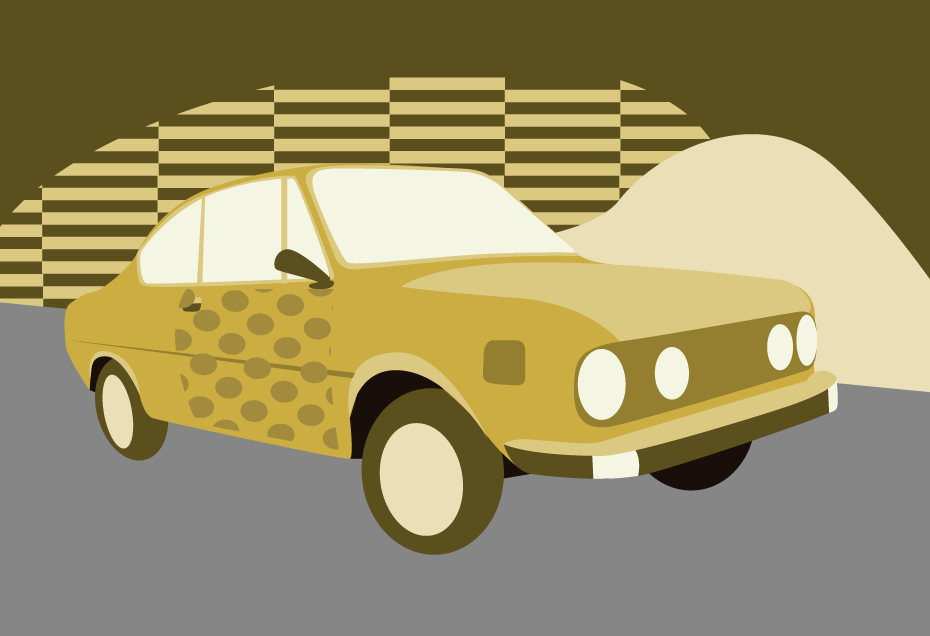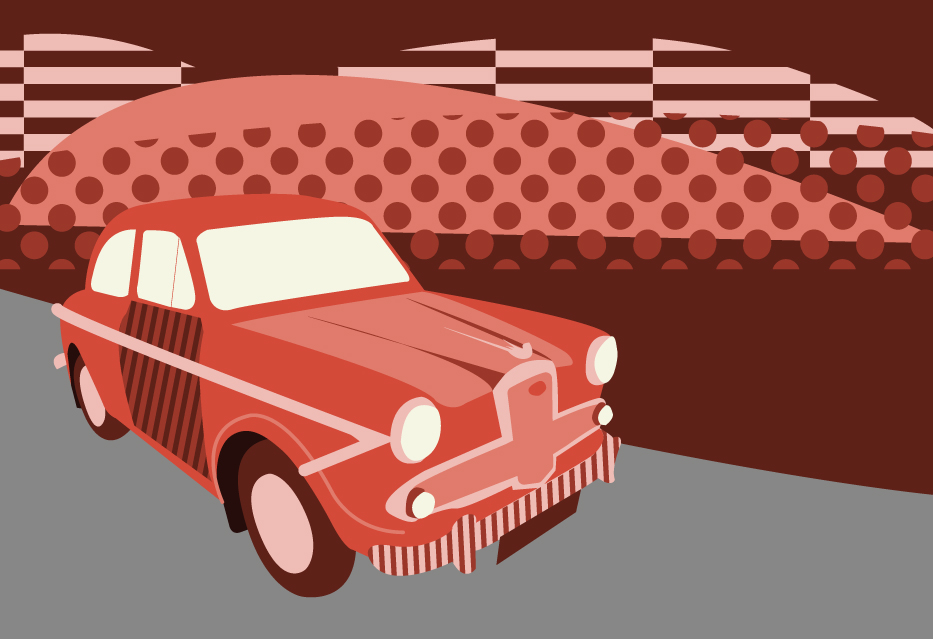Before its transformation under Volkswagen, Škoda was a byword for cheap and fairly nasty cars, and the butt of countless jokes.
But one vehicle among the Czech company’s back catalogue deserves to be treated with considerably more respect.
The S110R is not only a pretty little couple in its own right, but it also spawned the rally-spec 130RS, class winner of the Monte Carlo Rally and dubbed the “Porsche of the East”.
It’s easy to dismiss older Škodas as rubbish Eastern bloc cars, cheaply made, poorly built and lacking in design flair.
And while their quality clearly pales when placed next to the current, German-engineered models, the older generation had plenty going for them.
Rugged, reliable and, yes, cheap to buy, the various Estelle models sold in large numbers in the UK, as frugal motorists bought brand new cars with warranties for less than the cost of well-used, five-year-old Fords and Vauxhalls.
But long before the Estelle hit the market in 1977, the Czechs had come up with something that could turn your view of retro Škodas on its head.
Rakish fastback
The Škoda S110R was one of the dream cars of Eastern Europe, a rakish fastback design wrapped around the underpinnings of the rear-engined 110 saloon.
Launched in 1970, it replaced the sporty 1100MBX, with sleek new looks and an uprated 62bhp version of Škoda’s four-pot, 1107cc OHV engine.
Buyers got sports seats, a sports steering wheel and three auxiliary instruments as well as frameless side windows.
For the time, it was a handsome car from every angle, and its configuration – rear engined, rear wheel drive, and a two-door, 2+2 coupe body shell – drew comparisons with the Porsche 911.
Granted, its performance and build quality couldn’t hope to compete with the German legend, but it did provide some of the same thrills for a fraction of the price.
Not many of the 56,902 built in the former Czechoslovakia made their way to the UK, and only five are currently registered for the road, according to the How Many Left website.
One of those belongs to David Pickett, who has owned his metallic silver example since the early 1990s – one of six Škodas he owns.
S110R rescued from breakers yard
David found the car languishing outside an ex dealer in Southampton, and rescued it from the scrapheap for £50.
“It looked like it had been abandoned and the top of the engine was missing,” he says. “The owner was planning on breaking it for parts.”
After a seven-year restoration, the now-immaculate coupe has been in regular use for more than 20 years, David often driving it to Škoda owners club events.
Built in 1976 but not registered until 1980 because of import restrictions, it’s one of the last right hand drive cars to make its way to the UK.
The car’s swing-axle rear suspension drew some criticism, prompting some hairy moments on wet roundabouts, and David admits the handling is “unique”, but “not as scary as some people think”.
Like our illustration of the Skoda S110R at the beginning of the article?
Download a free high-quality poster version here.
Like a slow Porsche 911
“It’s great fun to drive – like a slow Porsche 911 with all the weight at the back,” he says. “There’s no need to ease off for bends, you just keep your foot to the floor and it will go round, though it can be a bit unnerving.
“You have to be committed because if you ease off and find a wet patch, you could lose the back end. Just keep the revs on and keep going.”
You can read more about David’s Škoda obsession on our Forever Cars site.
Performance of the S110R was lively considering its engine size and power output, reaching 60mph in 17.7 seconds and hitting a more than respectable 90mph.
In 1977, a new S110R could be yours for £1,700, compared to an admittedly more powerful VW Scirocco at a shade under £4,000.
These days, so few come up for sale it’s very hard to settle on a current value, but you’d be unlikely to get much change from £10,000.
Production ended in 1980, making way for the Škoda Garde, a coupe based on the 105/120 series of saloons and ultimately morphing into the Rapid.
An interesting and attractive car in its own right, the S110R story didn’t end on the road, thanks to Škoda’s phenomenal rally success.
Magnificent and mighty 130RS
The peppy but limited road car became the template for the “Porsche of the East” – the magnificent and mighty 130RS.
It gained its nickname thanks to its rear-engined layout, but also because it was one of the world’s most successful rally cars of the 1970s and ‘80s.
Powered by a 1.3-litre, four cylinder unit fed by twin Weber carbs, it pumped out a whopping 140bhp, enough to propel its slippery shape to 136mph.
Other engineering tech that helped it dominate its class included an eight-channel cylinder head, dry sump lubrication, plus an aluminium cylinder and crankcase.
It made an incredible, rasping racket, and looked the part in its customary red, white and blue livery.
The 130RS weighed only 720kg thanks to aluminium roof, bonnet and door skins, along with glass-fibre reinforced wings and engine cover.
Equally at home on tarmac or the rally circuit, it debuted on the track in the Czechoslovak Peace and Friendship Cup, taking a clean sweep of the podium places in the overall standings.
Adrian Flux Classic Car Insurance
Monte Carlo marvel
The 130RS made a winning debut on the Czech rally scene in 1976, but Škoda shook up the rallying world the following year in Monte Carlo.
The company’s works team prepared meticulously, each car covering 500km per day in a rigorous training schedule.
Of the 198 cars that set out on January 22, only 45 crossed the finishing line six days later, two of which were the reliable Škodas.
Václav Blahna and Lubislav Hlávka won the category for cars up to 1,300cc, followed home by Milan Zapadlo and Ji?í Motal in another 130RS – the Škodas taking 12th and 15th overall against considerably larger and more powerful opposition.
In the hands of John Haugland, a 130RS won its class for three years in a row in the RAC Rally between 1975 and 1977, while there were also wins in the 1978 Rally Sweden, and the Barum Rally in 1980.
Back on tarmac, the 130RS took the overall manufacturers’ crown in the 1981 European Touring Car Championship.
All the while the 130RS was claiming bigger scalps on tracks and rally circuits, Škoda was using the model to create a “silhouette car” as a testing ground for various new technologies.
Fire-breathing Type 738
This was the fire-breathing 130RS A5 Type 738, a winged wonder with a snow-plough front spoiler and the Czechs’ answer to Porsche’s ‘Moby Dick’ 935.
Those extravagant front and rear attachments were designed to explore the then dark arts of aerodynamics, the 738 propelled up and down Hoškovice airport’s runway to work out how the car’s handling was affected by subtle tweaks.
Entirely built out of fibreglass, and initially fitted with the 1,771cc OHC Š 720 engine providing 154bhp, the early 738 could hit a top speed of 130mph. Not bad, but not earth-shattering either.
But then came the 1,589cc, Š 737 prototype unit, designed in conjunction with the Motor Vehicle Research Institute in Prague.
The all-aluminium four-cylinder unit received a 16-valve cylinder head with DOHC valvetrain, and could push out 190bhp at 8,500rpm, and a maximum torque of 163 Nm at 7,500rpm.
This pushed the top speed up to 155mph, a pretty startling figure from a naturally aspirated, 1.6-litre engine at the end of the 1970s.
Whether in road, rally or race track guise, this under-rated Czech coupe had the rear-engined fun and thrills of a Porsche, for a fraction of the price.













